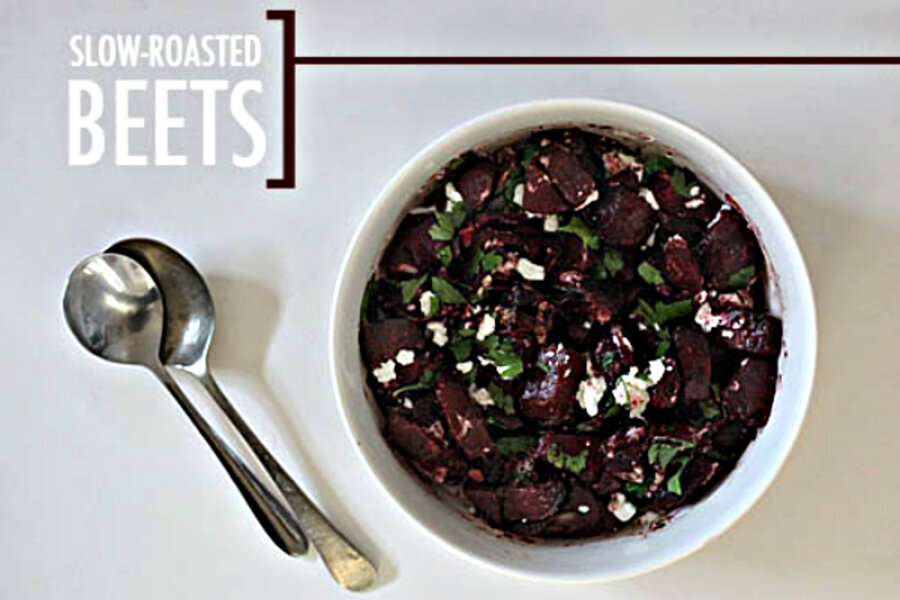Feasting on Art: Slow-roasted beets
Loading...
This recipe was devised as an accompaniment to spatchcock stuffed chicken. By cooking the beets over a long period of time with a low amount of heat, the natural sugars in the vegetable caramelize producing a sweetness which is echoed by the balsamic reduction. This dish almost didn’t make it to the table due to my spring-loaded oven doors. Luckily a quick catch saved the beets which proved to be a perfect pairing with the poultry.
The American artist Ed Ruscha is commonly associated withe the Pop Art movement of the late 1950s. The work shown here is from the mid-1970s when Ruscha began experimenting with a wide array of materials ranging from gunpowder to chocolate syrup. In 1969, he compiled an editioned folio titled Stains which consisted of 75 sheets of paper each bearing the smears and splatters of the different materials.
Slow-Roasted Beets
This dish would be excellent with a handful of nuts thrown in at the end (walnuts or almonds) and feta could be substituted for the goat cheese.
Yield: 6 servings
4 large beets
1 onion, sliced
1 tablespoon olive oil
pinch of sea salt and ground pepper
1/2 teaspoon dried oregano
1/2 teaspoon dried thyme
1/2 teaspoon dried chili flakes
4 tablespoons balsamic vinegar, divided
2 tablespoons butter
1/3 cup crumbled goat cheese
small handful of fresh parsley, torn
Preheat oven to 350 degrees F. (180 degrees C.)
In a large roasting pan, add the beets, onion, olive oil, salt, ground pepper, dried oregano, thyme, chili flakes and balsamic vinegar. Toss to coat and disperse ingredients. Spread out in a single layer at the bottom of the pan and dot the top with butter.
Roast for 1 hour. Drain off liquid into a small sauce pan and reserve. Return to oven for an additional 2-1/2 hours. Stir occasionally.
Over a medium heat, add additional balsamic vinegar and simmer until thickened, around 3 minutes. Swirl pain occasionally to keep from burning.
Drizzle over balsamic reduction. Add goat cheese and parsley and gently toss. Serve warm or room temperature.
Related post on Feasting On Art: Spatchcock stuffed chicken








